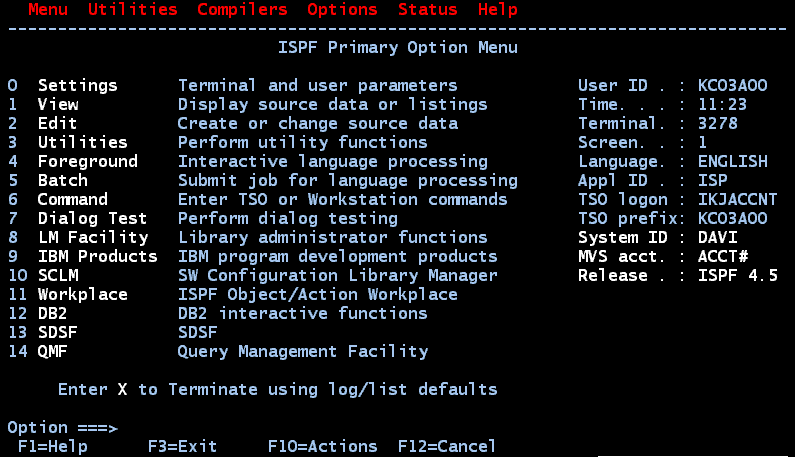
Overlay (used with copy and move to specify the line into which the copied/moved line is to be inserted - only spaces are replaced). The mask defines the default content for inserted lines. Works the same as copy except that the lines are removed from their current location. This command is only valid on excluded lines.Ĭonvert all text on this line to lower caseĬan be specified with a number to convert more than one line to lower case. With block commands the command needs to be entered on both the first and last lines to define a block of lines.Ĭan be specified with a number to display more than one excluded lines. These commands usually act on the data line that is alongside and may also affect adjacent lines if a number is typed alongside. The field usually contains either '******' or line numbers.

This is a list of the various commands that can be entered into the field alongside the individual lines of the file that you are editing using the ISPF editor. UNNUM :- Replace line numbers with blanks and turn number mode off.UNDO :- Undo the last change stored in the recovery dataset.TABS :- Control logical and hardware tabbing.
 SUBMIT :- Submit the content of the member for background processing. STATS :- Determine whether member statistics are maintained. RESET :- Resets the specified settings to their default.
SUBMIT :- Submit the content of the member for background processing. STATS :- Determine whether member statistics are maintained. RESET :- Resets the specified settings to their default. .png) REPLACE :- refer to Moving Lines of Data for full details of the parameters available with this command and how to use it. RENUM :- Resequence line numbers automatically. RECOVERY :- Determines whether changes are saved in a recovery dataset. PROFILE :- Determine whether or not profile changes will be saved. PROFILE :- Display the specified profile. PASTE :- refer to Moving Lines of Data for full details of the parameters available with this command and how to use it. PACK :- Determine whether data is stored in a compressed format. NUMBER :- Determine how line numbers are stored. NULLS :- Controls how trailing blanks are handled.
REPLACE :- refer to Moving Lines of Data for full details of the parameters available with this command and how to use it. RENUM :- Resequence line numbers automatically. RECOVERY :- Determines whether changes are saved in a recovery dataset. PROFILE :- Determine whether or not profile changes will be saved. PROFILE :- Display the specified profile. PASTE :- refer to Moving Lines of Data for full details of the parameters available with this command and how to use it. PACK :- Determine whether data is stored in a compressed format. NUMBER :- Determine how line numbers are stored. NULLS :- Controls how trailing blanks are handled.  NOTES :- Determine whether or not notes are displayed. MOVE :- refer to Moving Lines of Data for full details of the parameters available with this command and how to use it. LOCATE :- Locate the specified type of line. Indicate optional parameters, indicates a choice of one of the options listed (or none), :- Locate the specified line.
NOTES :- Determine whether or not notes are displayed. MOVE :- refer to Moving Lines of Data for full details of the parameters available with this command and how to use it. LOCATE :- Locate the specified type of line. Indicate optional parameters, indicates a choice of one of the options listed (or none), :- Locate the specified line.




.png)



 0 kommentar(er)
0 kommentar(er)
